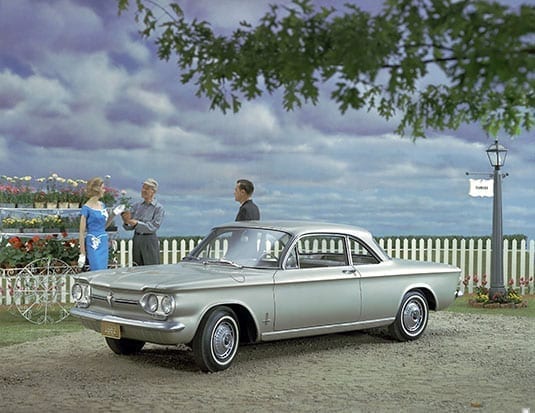If corporations are prone to telling lies, do we really know the truth about the self-driving future?
Was P.T. Barnham correct when he said, “There’s a sucker born every minute?”
Let’s think about that for a moment in relation to the auto industry. Let’s think back to some of the great failures in the industry. It’s hard to believe, but it’s been over 50 years since GM delivered the American answer to the Volkswagen.
VW controlled the small import market at the time and its sales were beginning to infringe on the big three. GM took a stand against the flood and developed its own—the Chevrolet Corvair. Body styles included a convertible, coupe, wagon and van—all built on the same platform and powered by the same driveline.
The problem occurred when they used a potentially troublesome swing-axle suspension. This crude suspension was nothing new. Used on the Triumph Spitfire and other various offerings, the design had a propensity for its rear wheels to “tuck in” when cornering, causing the car to suddenly rotate without warning.
It was basically a poor design, according to Ralph Nader in his scathing book, Unsafe at Any Speed. Because the large, heavy engine hung out the back and the axles tucked under in hard turns, the car was deemed “undrivable” due to the extreme oversteer.
GM redesigned the Corvair in 1965, but it was too little, too late. Adding to the misery, Ford had just introduced the Mustang. The loser? The customers who purchased the cars.
The notorious Pinto
Talking about Ford, let’s mention its fiasco, the Pinto. It was also developed as an import fighter with a more traditional driveline set-up—engine in the front, rear wheel drive.
After the car’s release to the public, it became apparent that when hit in the rear during a collision the car had a tendency to catch fire. According to Popular Mechanics, “In low-speed rear-end crash testing the fuel tank, positioned behind the rear axle and in front of the rear bumper, exhibited several flaws. Upon impact, the filler neck would tear away from the sheet-metal tank and spill fuel beneath the car. The tank was also easily punctured by bolts protruding from the differential and nearby brackets.”
The all-important bottom line
After the Corvair, one would have thought Ford would have been more prudent when it came to producing safe vehicles. But Ford was more interested in the bottom line.
“Management’s attitude was to get the product out the door as fast as possible.
So, Ford did a cost-benefit analysis. To fix the problems would cost an additional $11 per vehicle, and Ford weighed that $11 against the projected injury claims for severe burns, repair-costs claim rate and mortality. The total would have been approximately $113 million (including the engineering, the production delays and the parts for tens of thousands of cars), but damage payouts would cost only about $49 million, according to Ford’s math. The fix was nixed, and the Pinto went into production in September 1970.” (Popular Mechanics)
I have found, in my later years, that all corporations act the same. They lie!
They’re more interested in the bottom line than in protecting their customers.
With the advent of self-driving cars and the ability to hack them, are we vulnerable to hacking while driving our modern cars? I can’t see any scenario where any of today’s auto manufacturers would admit to being hacked. Just imagine the effect on the bottom line.



